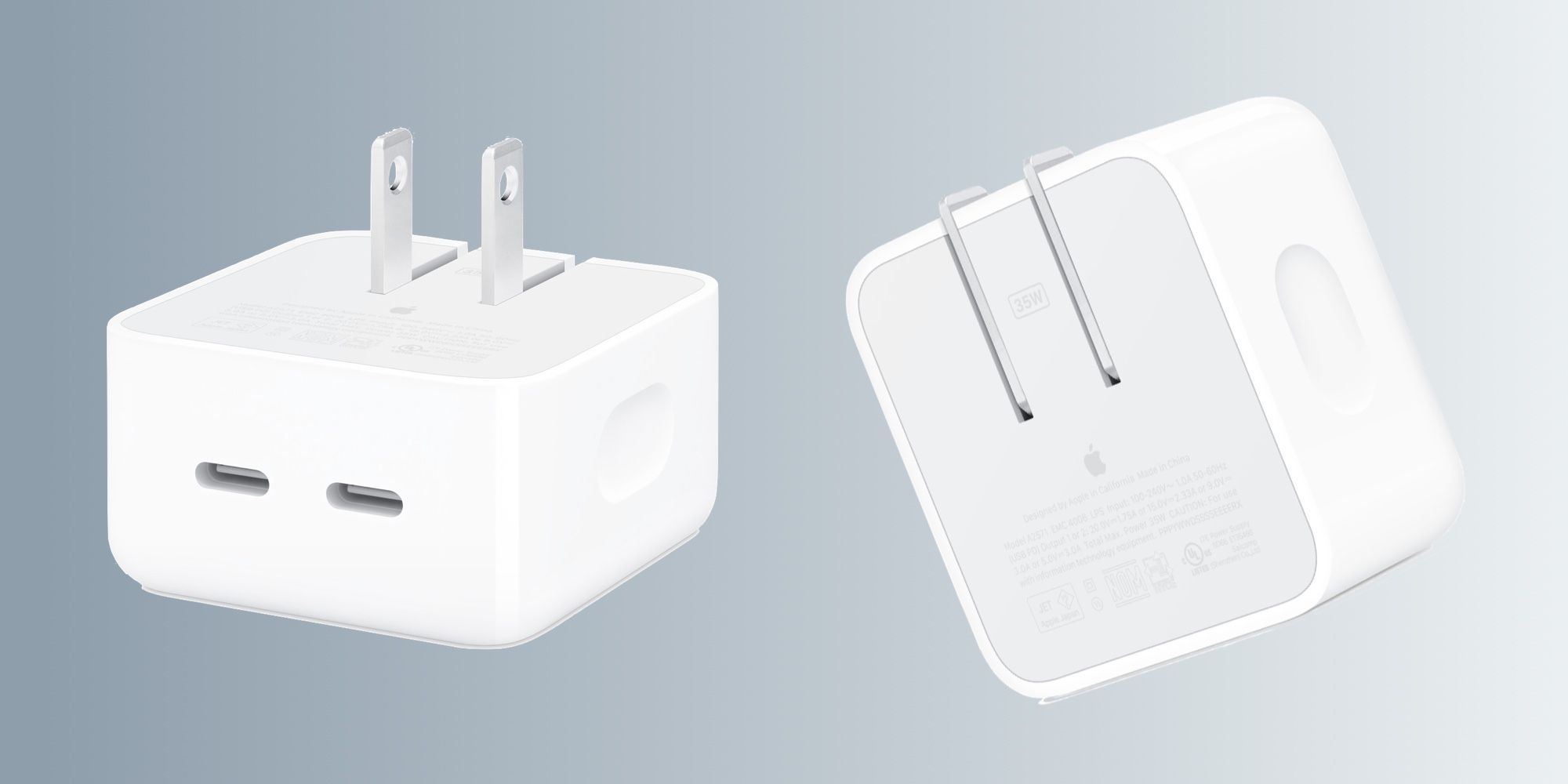Apple is offering a single power adapter that can charge two devices at once for the first time, and it can balance the power delivery between devices based on their respective power requirements. Though the company no longer includes a power adapter in the box with certain devices, like iPhones, the quality of their adapters has improved in recent years. For over a decade, a merely 5W USB-A power adapter was included with most iPhones and iPods, despite the power requirements of those devices increasing. Now, the default option from Apple’s retail stores is an 18W compact USB-C power adapter, which is much more helpful than prior power adapters from the company. But for users looking to charge more than one device, the dual power adapter might be the way to go, and it balances power to charge devices quickly.
Apple introduced the product at the Worldwide Developers Conference in June, an event typically reserved for software announcements and developer tools. However, this year’s event featured a new M2 MacBook Air, and the dual 35W power adapter was released alongside the redesigned laptop. For buyers looking to pick up a new M2 MacBook Air, some configurations of the computer come with the dual 35W power adapter bundled with it. Anyone else wanting an official Apple power adapter that can charge more than one device will have to shell out $59 for either the full-sized or compact model. The dual power adapter might not be anything special compared to third-party options, but a power balancing feature might be useful for charging Apple devices.
Each device has different power requirements, and using an underpowered power adapter can result in an underwhelming user experience. For example, although an 18W iPad Pro charger featuring USB-C can — in theory — power a MacBook, it doesn’t have enough power to charge the device. This is why a 35W dual power adapter is seemingly underpowered to charge more than one device. Most power adapters will evenly split wattage between devices when more than one product is connected, slashing the amount of power it delivers. But in some cases, the Apple dual power adapter can intuitively distribute power based on need.
How The Dual Charger Splits Power

For most Apple devices, the power delivery will be evenly split between the two devices while using the company’s dual power adapter. This is because most Apple devices require more than 17.5W of power delivery, which is the amount of power the charger can provide when it is split evenly between the two charging ports. Any combination of iPhones, iPads and MacBooks connected to the power adapter will each receive 17.5W of power delivery. Apple recognizes that this may not be enough power to charge some devices quickly, especially MacBooks and high-end iPads. To combat this, it recommends leaving a USB-C port open so that the power-hungry devices can consume all 35W of available power.
The power balancing feature makes an impact when a pair of AirPods or an Apple Watch are connected to the power adapter since these devices require less power. The power delivery isn’t split evenly if a MacBook, iPhone, or iPad is connected to the power adapter with a pair of AirPods or an Apple Watch. The MacBook, iPhone or iPad will receive up to 27.5W of power delivery, while the pair of AirPods or Apple Watch will receive up to 7.5W of power. This feature might make the dual power adapter the perfect solution for charging an iPhone and a pair of AirPods or an Apple Watch simultaneously. The power distribution ensures that both devices receive the power they need to charge quickly. However, for more powerful devices like MacBooks and iPads, the dual power adapter might not cut it when charging multiple devices.




